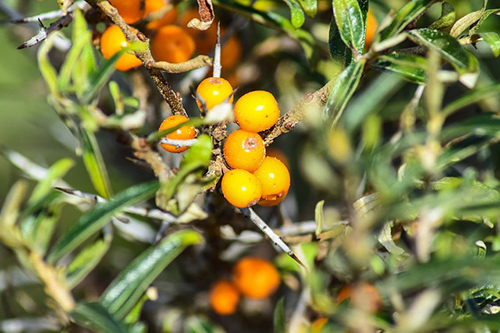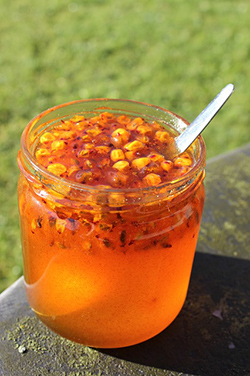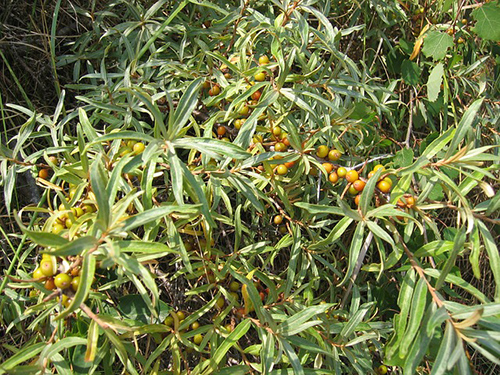Contents
During ancient times, the sea buckthorn plant was regarded as poisonous for horses, so its scientific name answers to this idea: Hippophae (Horse killer). Today, we know that sea buckthorn is harmless for horses and is one of the plants with the highest concentration of vitamin C known.
- SEA BUCKTHORN: Grown in high altitudes of the Himalayas, this fruit contains beneficial compounds
- OMEGA RICH: Each softgel provides the equivalent of 4,400 mg of fruit from a concentrated extract**

Sea Buckthorn Plant Scientific Facts
- Scientific synonyms: Echinacea pallida Nutt.
- French: Argoussier.
- Spanish: Espino amarillo.
- Environment: Spread along river banks and sandy soils throughout Europe and naturalized to America.
- Description: This is a thorny shrub of the Elaeagnaceae family. It is deciduous and grows from one to three meters high, with narrow, lanceolate leaves. It has small, green, unisexual flowers (a dioicous plant). The plant’s fruits are yellow or orange berries.
- Parts of the plant used medicinally: The berries.

Healing Properties and Indications
The berries of the sea buckthorn plant contain organic acids, flavonic glycosides, carotene (provitamin A), B vitamins, and mainly vitamin C (600 mg per 100 g, ten times more than lemon). Its properties are as follows:

- Antiscorbutic, invigorator, and immunostimulant due to its content of vitamins (especially vitamin C). It is recommended for repeating infections (decrease of defenses), influenza, physical exhaustion, an imbalanced diet, and, as a rule, whenever the vital tone of the body needs to be increased.
- Mildly cardiotonic and activator of the circulatory system due to its content in flavonic glycosides. It is typically used as a complement to the foxglove plant treatments.
- Mildly diuretic and appetizer.
How to use Sea Buckthorn
- Berries. The fruit of sea buckthorn can be eaten when well-ripened (three handfuls per day), though they have a slightly sour flavor.
- Syrup. Boil the berries’ juice for 15 minutes, then add half the weight of sugar. Store the syrup in a well-sealed glass bottle. Take three spoonfuls daily.
DISCLAIMER: All content on this website is presented solely for educational and informational objectives. Do not rely on the information provided as a replacement for advice, diagnosis, or treatment from a qualified medical expert. If you are pregnant, nursing, or have any preexisting medical concerns, talk to your doctor before using any herbal or natural medicines.
REFERENCES
- George D. Pamplona-Roger, M.D. “Encyclopedia of Medicinal Plants.” George D. Pamplona-Roger, M.D. Encyclopedia of Medicinal Plants. Ed. Francesc X. Gelabert. vols. 2 San Fernando de Henares: Editorial Safeliz, 2000. 758. Print.
- https://www.webmd.com/vitamins/ai/ingredientmono-765/sea-buckthorn
- https://www.healthline.com/nutrition/sea-buckthorn-oil
Last update on 2025-06-04 / Affiliate links / Images from Amazon Product Advertising API





